
A well-designed butterfly garden should have flowers all season and contain plants that feed the caterpillars of butterflies as well as the adults. You’ll know if you’ve done well when monarchs (Danaus plexippus), painted ladies (Vanessa cardui), swallowtails (Papilio spp.), and other butterflies visit your garden frequently and even stay to grow and pupate.
There are two ways to maintain constant blooms for your butterflies. You can 1) strategically plant spring, summer, and fall-flowering perennials they like, and 2) be sure to also plant ever-blooming annuals for butterflies. So many garden flowers are favored by lepidopterans, the task is easy. Just a couple of visits to the garden center should do it.
Then there is designing your butterfly garden. I have created an example of an easy, beautiful butterfly border design (below) that contains common butterfly flowers. Use it as a guide for mingling perennials and annuals together to offer flowers and larval food for butterflies through the season.
What Makes a Butterfly Flower a Butterfly Flower?
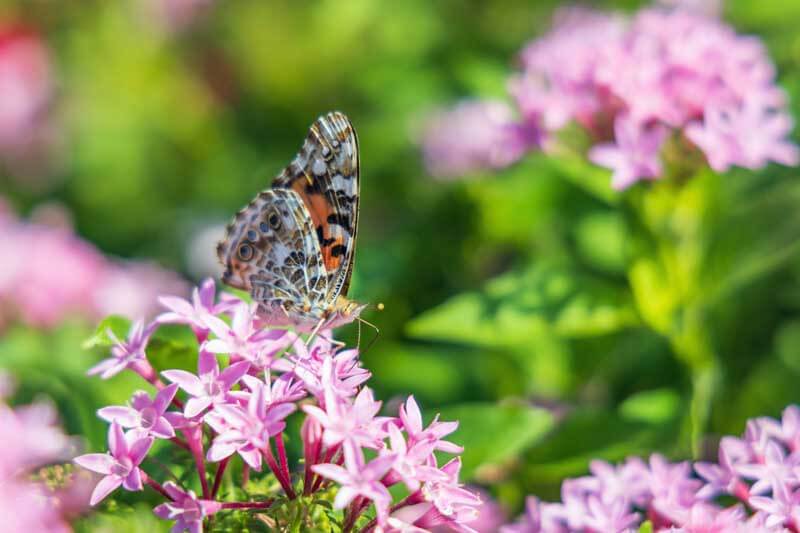
The technical term for butterfly pollination is psychophily. Some flowers are primarily pollinated by butterflies because they have suites of traits that attract these insects. In general, butterflies have a poor sense of smell, long curled tongues (proboscises), good vision, and must perch to feed. To accommodate these traits, flowers most adapted for butterfly pollination are:
- Not strongly scented
- Tubular and filled with nectar
- Colorful
- Shaped for butterfly perching with flat-topped or domed clusters or wide-petals
If you look for these traits, you don’t necessarily need to know the names of butterfly flowers. You can visually identify them.
Eight Favorite Butterfly Annual Flowers
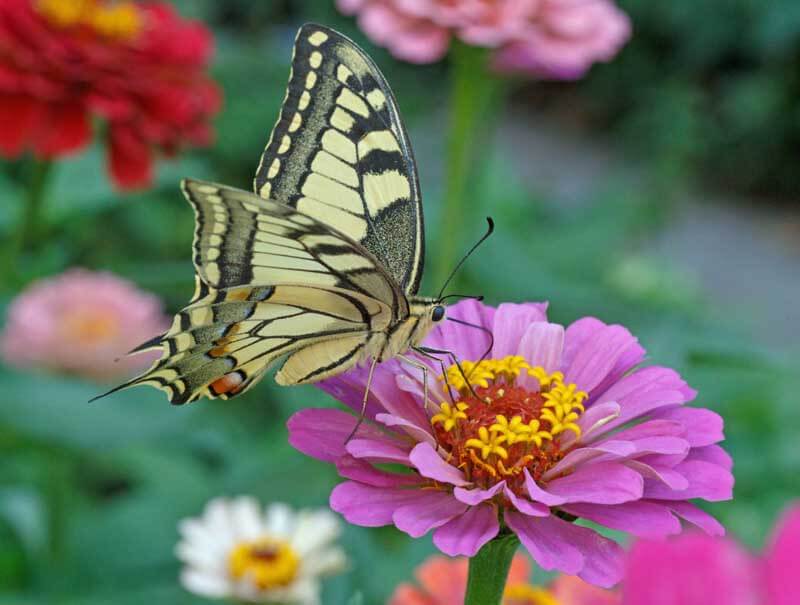
If you are just starting out with butterfly gardening, the fastest, lowest-cost way to attract them is with ever-blooming annuals. These can be started from seed or purchased as starts from the garden center. Here are eight of the very best annuals for butterflies that will not disappoint. All should be planted in the ground after the threat of frost as passed. (Click here to determine your last frost date.)
- Bloodflower (Asclepias curassavica): The beauty of this tropical milkweed is that its flower clusters of bright red, yellow, and orange just keep blooming throught the warm months. All butterflies love it, but the plants also feed monarch caterpillars. Often it will gently self-sow from year to year.
-
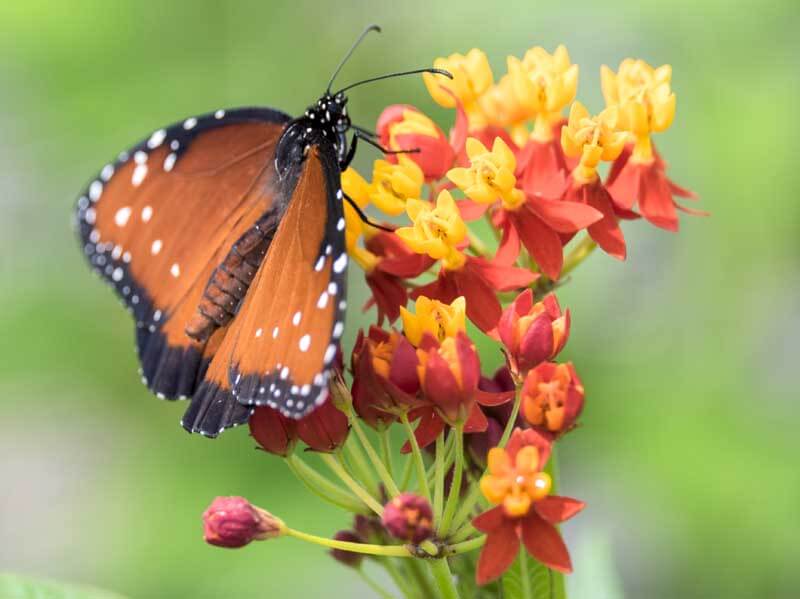
Bloodflower is a great tender milkweed for all butterflies, such as this Queen butterfly. Purple Queen-Anne’s Lace (Daucus carota ‘Dara’): The lacy blooms of Dara Queen-Anne’s Lace are purplish-pink and loved by all butterflies. It is especially important to swallowtail caterpillars, which feed on the foliage.
- Madagascar periwinkle (Catharanthus roseus): Butterflies are attracted to this widely popular, low-cost bedding plant, which is easy, beautiful, and can be found at any garden center.
- Heliotrope (Heliotropium arborescens): The violet-blue flower clusters of heliotrope are equally loved by butterflies and bees. Keep the old flower clusters pinched off to make way for new fragrant domes of blooms.
- Lantana (Lantana camara): Gardeners living in hot, dry places should plant lantana for its multi-colored blooms of gold, orange, pink, and red, which are irresistible to butterflies. Those in the Bandana Series are compact and colorful.
-
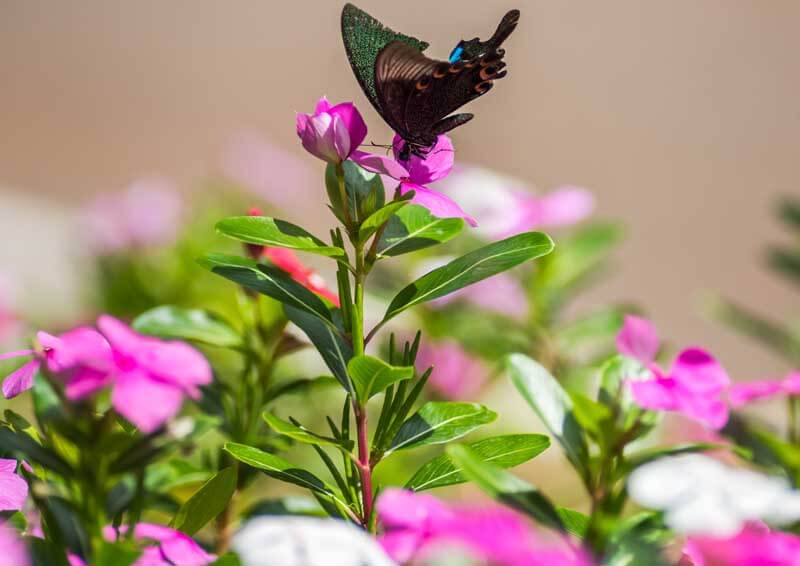
All butterflies are attracted to the long-tubed flowers of Madagascar periwinkle. Egyptian Starcluster (Pentas lanceolata): Everyone who plants a butterfly garden should grow the effortless Egyptian starcluster. Varieties may have lavender, pink, purple, red, or white flowers. Those in the Starcluster Series have extra-large clusters.
- Verbena (Verbena spp. and hybrids): There are so many fantastic garden verbenas and butterflies like them all. Superbenas are nonstop bloomers that come in many exciting colors, and the upright stems of Lollipop Brazilian vervain (Verbena bonariensis ‘Lollipop’) are equally attractive and popular with pollinators.
- Zinnias (Zinnia hybrids): Plant any zinnia. Butterflies like them all. My personal favorites are the classic, low, spreading Profusion Zinnias, with the deepest orange-red Profusion Fire being one of the finest colors.
Eight Favorite Butterfly Perennial Flowers
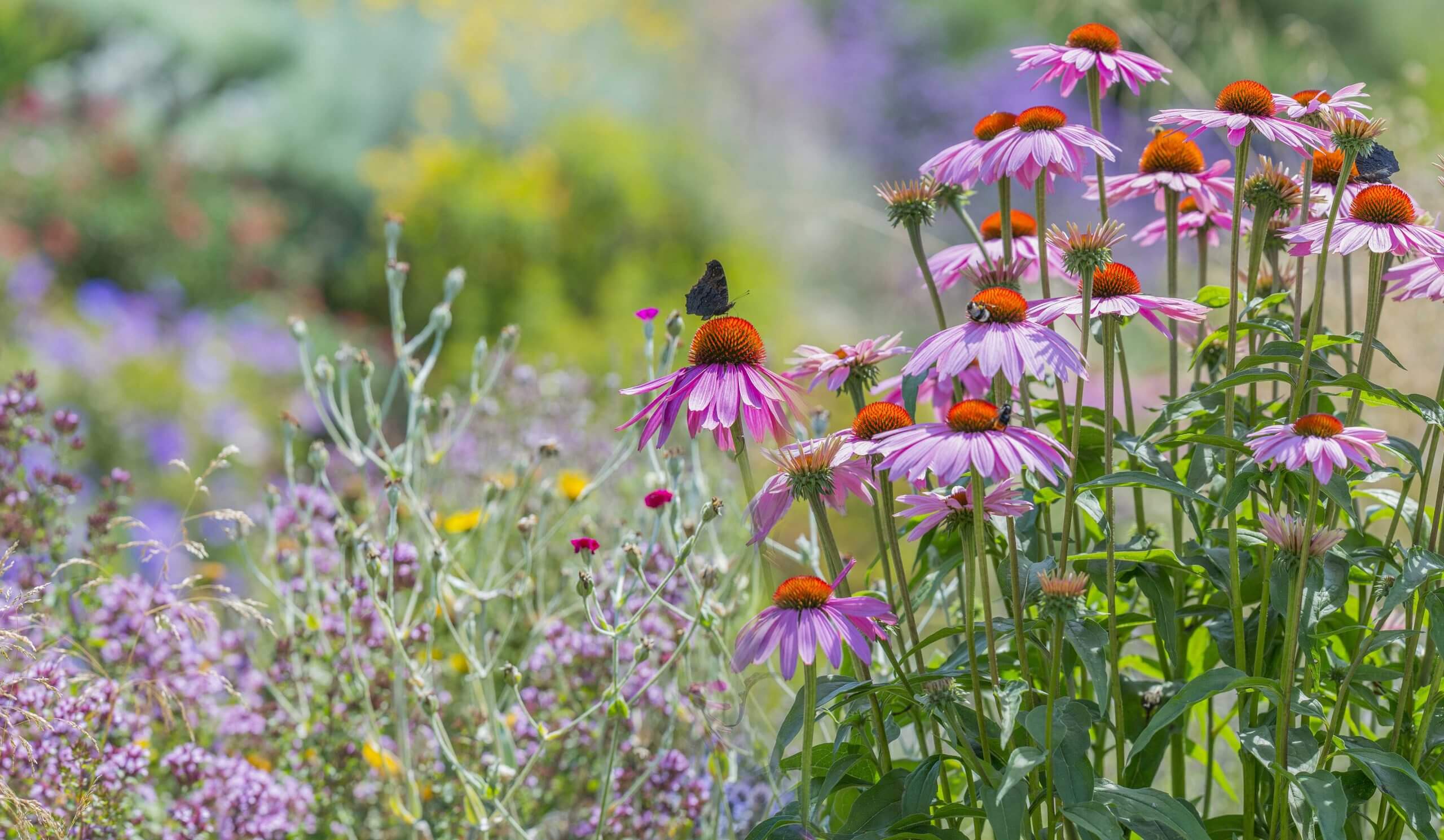
- Aster (Aster species and hybrids): Fall is a time when migrating butterfly species are on the move, and asters are one of the best flowers to feed them at this time. Their purple, violet-blue, pink or white flowers are also a delight. The compact, pale violet-blue flowered aromatic aster ‘October Skies’ (Symphyotrichum oblongifolium ‘October Skies’, USDA Hardiness Zones 5-8) is a billowy beauty that flowers in mid to late fall.
- Butterflyweed (Asclepias spp.): This is an essential larval plant for monarch caterpillars, and its clusters of brilliant orange flowers are long-blooming and bright. (Watch the video below to learn more about the many different kinds available.)
-
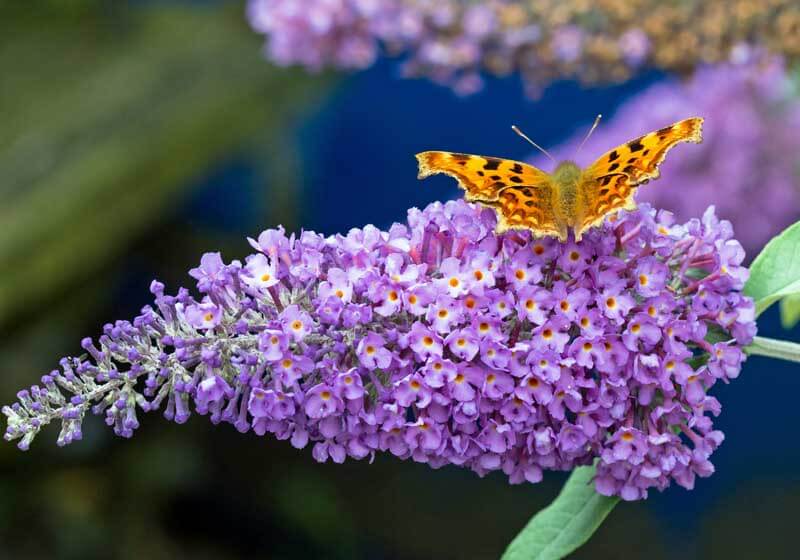
Butterflybush now comes in very compact forms that fit well into perennial gardens. Butterflybush (Buddleia davidii): There are so many different Buddleia from which to choose, but new super dwarf varieties make them ideal for perennial borders. The 2-foot Pugster® Amethyst has especially large, pretty, violet flower clusters.
- Bluestar (Amsonia species and hybrids): The late spring or early summer blooming bluestar is an early garden flower for butterflies. ‘Storm Cloud’ is a spectacular form that creates a bushy 2-foot mound covered with clusters of pale blue flowers.
- Coneflowers (Echinacea species and hybrids): The large daisies of summer-blooming coneflowers come in lots of colors and feed many pollinators. Their dry seedheads even feed songbirds in fall and winter.
- Blazing Star (Liatris spp.): With bold spikes of purple flowers, blazing stars make quite a statement in the summer garden. Butterflies can’t get enough of their nectar. Try the Midwest-native prairie blazing star (Liatris pycnostachya), which has massive flower spikes reaching 3-6 feet high from late summer to fall. The more manageable Kobold dense blazing star (Liatris spicata ‘Kobold’) is a spectacular bloomer with loads of rosy-purple flower spikes reaching skyward in midsummer.
-
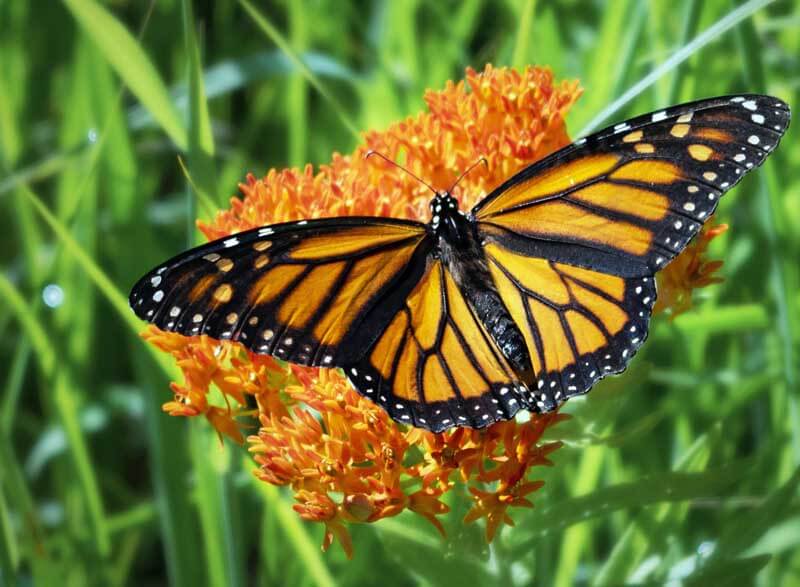
Butterflyweed is one of the prettiest perennial milkweeds for the garden. Tall Phlox (Phlox paniculata): Butterflies are drawn to all phlox flowers. Two favorite tall phlox varieties for summer butterflies are the heavy-flowering, pure white ‘David’ (4 feet) and the coral-pink flowered Garden Girls™ Glamour Girl (3 feet). Both are mildew resistant when most others are susceptible.
- Willow-Leaved Sunflower (Helianthus saliciflious): The natural form of this wildflower reaches a whopping 8 to 10 feet, but the heavy flowering variety ‘First Light’ reaches just 3 to 4 feet and becomes covered with yellow daisies in late summer to fall.
Garden Designs
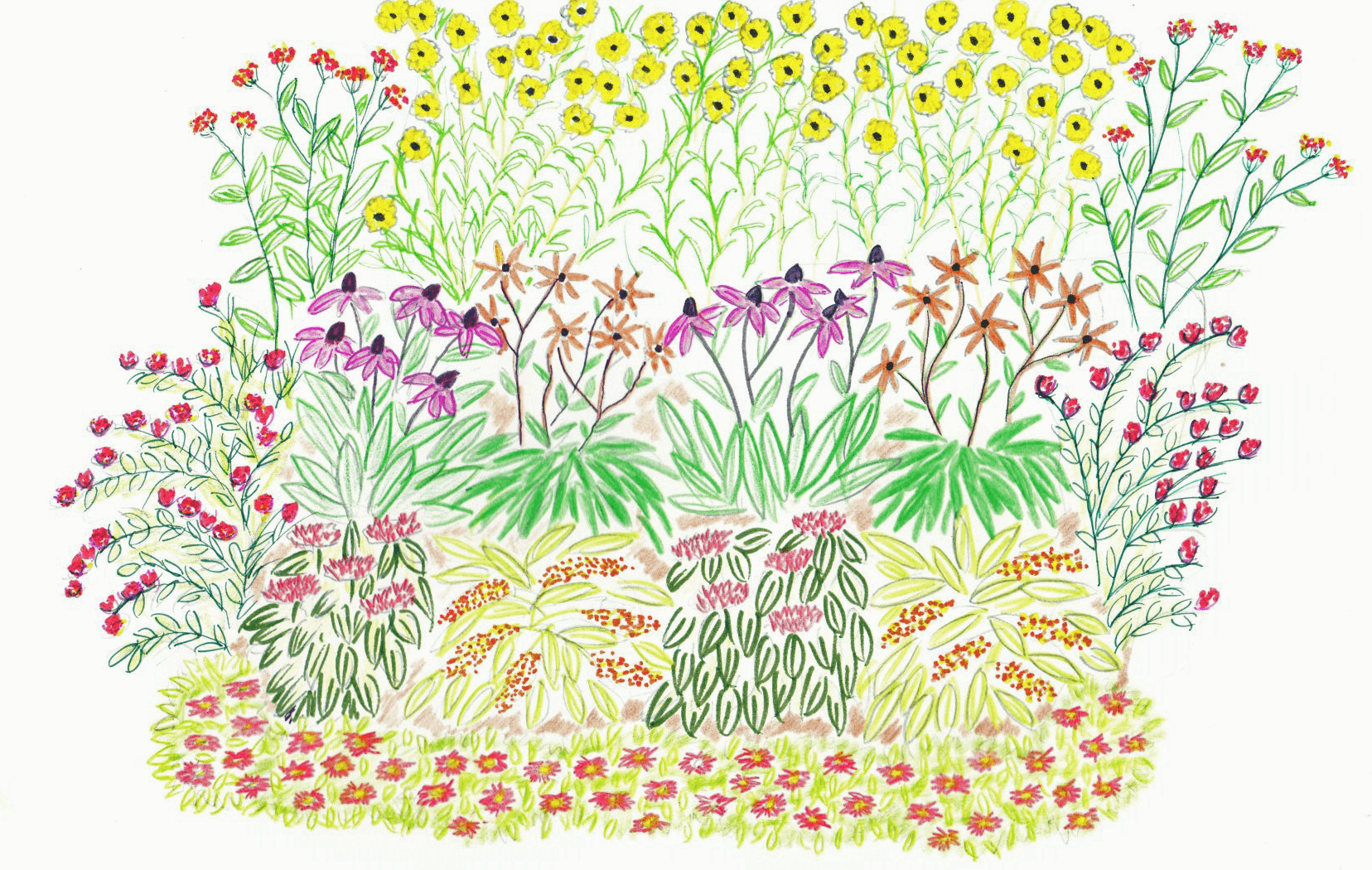
There are several designing rules of thumb when it comes to planting any flower border. Here are the five most important.
- Plant taller perennials towards the back or center of a flower garden.
- Leave space for colorful annuals towards the front of the beds. Everblooming annuals will extend the floral show.
- Consider flower color: Dot the garden with flowers in complementary colors that are pleasing to you.
- Consider bloom time: Choose a mix of flowers that bloom in spring, summer, fall, and all season. That way, your garden will never look dull and colorless.
- Create a rendering of your garden beforehand to get a sense of what it will look like.
Spring is the time to plan your butterfly garden and procure plants for it. Flower gardens are so much nicer when they feed wildlife, and butterflies are like flowers in flight. The more you have in your garden, the better.

